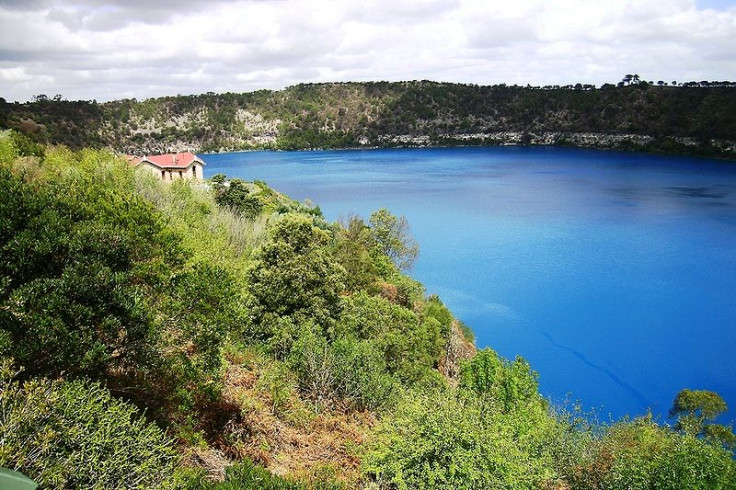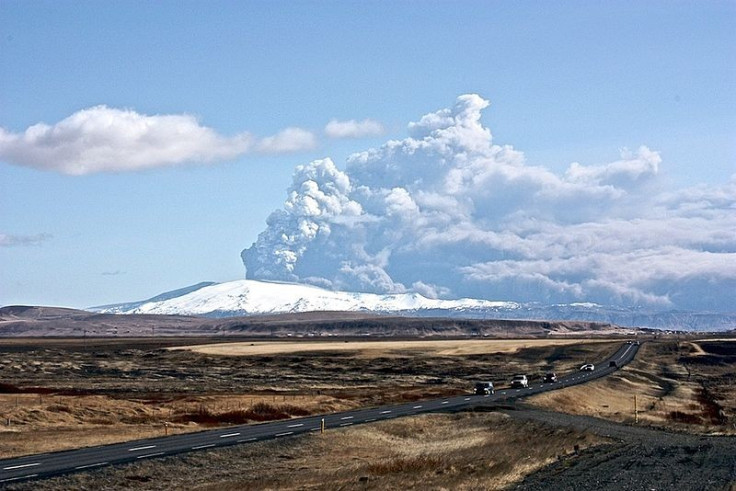Australia: Scientists Predict What Will Happen if Mount Gambier's 400 Eruption Centres Blow

Scientists in Australia have worked out what will happen if Mount Gambier erupts again.
Experts have established there will be "widespread damage" if the volcano were to erupt again - the first time the magnitude and size of a volcano on the Australian mainland has been calculated.
The Mount Gambier volcanic chain is a maar complex (a broad, low-relief volcanic crater) with over 400 eruption centres.
It contains four lake-filled maars and it is thought to be one of Australia's youngest but researchers say it has been active for up to five million years.
The volcano lies in southern Australia around 450 kilometres south-east of the capital Adelaide.
Published in the journal Bulletin of Volcanology, researchers at Monash University's Volcanology Research Group used 3D geometrical computer modelling and thermodynamics to work out how big an eruption from Mount Gambier would be.
The volcano last erupted around 5,000 years ago researchers based their impact assessment on volcanic deposits, and modelling of the volcanic plume, ash-dispersal and thermodynamics.
Dr Jozua van Otterloo and Professor Ray Cas estimated that Moung Gambier's last eruption was a similar size to the Eyjafjallajökull, Iceland eruption in 2010, which caused global chaos after sending ash into flightpaths.
The eruption, which registered as size four on the Volcanic Explosivity Index (VEI), would have a disastrous effect if it were to erupt, the researchers said.

To assess the impact, the scientists took a diagram showing the impact of the ash plume from the 2010 Icelandic eruption and juxtaposed it with Australia. It showed Mount Gambier would disperse enough material to fill the volume of 130,000 Olympic swimming pools.
"Magma rose to the surface from a depth of 80 kilometres and a large part of that magma interacted with the shallow groundwater which made the eruption so violent. With an ash plume of at least five to 10km high, the eruption can be classified as a size four eruption on the Volcanic Explosivity Index (VEI)," Dr van Otterloo said.
"Little is known about the magnitude of eruptions from this volcanic province (the Newer Volcanics) that stretches around 400 kilometres between Melbourne and Mount Gambier. It has over 400 eruption centres and has been active for at least four to five million years.
"Normally the size and magnitude of eruptions of active volcanoes are determined based on observations during these eruptions. Using 3D geometrical modelling, we've shown it is also possible to obtain volume estimates for different deposits of a prehistoric, monogenetic volcanic centre."
Van Otterloo said an eruption would close off the major airspace of eastern Australia, destroy crops and impact livestock up to 100km from the eruption site and would pose a health risk from the fine ash composed of glass fragments.
Discussing the possibility of another eruption, he added: "When and where the next eruption will occur is unknown. That is why our team continues undertaking extensive research in the area. Although statistics tell us it could be a long time before the next eruption, the main hazard is that when it does, we will only have a few days warning.
"Understanding explosive volcanism aids the community to manage risk and provides insight into potential regional or global disruptions including to infrastructure, and impact on climate."
© Copyright IBTimes 2025. All rights reserved.






















